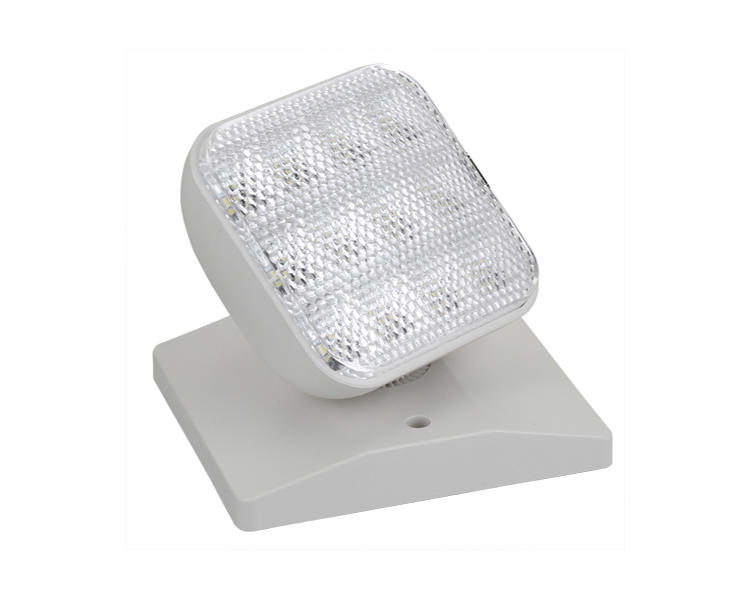LED Indoor single remote lamp head *Injection-molded thermoplastic ABS housing,UL 94V-0 flame rating...
JLEU5WP-Wet Location LED Emergency Light
Wet Location LED Emergency Light *Injection-molded thermoplastic ABS housing, UL 94V-0 flame rating ...

LED Indoor single remote lamp head *Injection-molded thermoplastic ABS housing,UL 94V-0 flame rating...

LED Indoor double remote lamp head *Injection-molded thermoplastic ABS housing,UL 94V-0 flame rating...

LED Outdoor single remote LED lamp head *Injection-molded thermoplastic ABS housing,UL 94V-0 flame r...

LED Outdoor double remote LED lamp head *Injection-molded thermoplastic ABS housing,UL 94V-0 flame r...

Indoor single remote lamp head Injection-molded thermoplastic ABS housing UL 94V-0 flame rating,fire...

Indoor double remote lamp heads Injection-molded thermoplastic ABS housing UL 94V-0 flame rating,fir...

Outdoor single remote Incandescent bulb lamp head Injection-molded thermoplastic ABS housing UL 94V-...

Outdoor double remote Incandescent bulb lamp heads Injection-molded thermoplastic ABS housing UL 94V...

UL Approved Twin Head Emergency Light *Injection-molded thermoplastic ABS housing,UL 94V-0 flame rat...

UL Approved Twin Head Emergency Light *Injection-molded thermoplastic ABS housing,UL 94V-0 flame rat...

Twin Head Emergency Light (Fixed lamp header) *Injection-molded thermoplastic ABS housing,UL 94V-0 f...

TWIN HEAD Heavy Duty EMERGENCY LIGHTING JEU6 Series *Injection-molded thermoplastic ABS housing,UL 9...
As China UL Emergency Light Manufacturers and LED Emergency Light Factory, We provide the corresponding certificates in order to meet the local market safety requirements, such as CE / RoHS / UL etc. Be in engaged in the emergency lighting industry for 54 years OEM/ ODM/ SKD is welcome
Established
Staff
Work area
Production capacity
In the unpredictable landscape of emergencies, having a reliable and versatile lighting solution is paramount. Introducing our cutting-edge Portable E...
In the realm of energy storage, the rechargeable lead-acid battery stands out as a stalwart champion, embodying the essence of long-lasting power and ...
In the ever-evolving landscape of energy storage solutions, rechargeable lead-acid batteries stand out as a reliable and eco-friendly option, offering...
Emergency ballasts and regular ballasts serve different purposes and have distinct features. 1.Primary Function: Regular Ballasts: Regular ballasts a...
What role does UL play in setting standards for the duration of operation and battery life in emergency lights?
UL (Underwriters Laboratories) plays a crucial role in setting standards for the duration of operation and battery life in emergency lights through the development and maintenance of specific standards that address these aspects.
UL has established standards that manufacturers must adhere to in order to achieve certification for their emergency lighting products. Here's a breakdown of the role UL plays in this context:
Setting Performance Requirements: UL Emergency Light develops and maintains standards that outline the minimum performance requirements for emergency lights, including criteria related to the duration of operation and battery life. These standards are designed to ensure that emergency lights meet specific performance benchmarks during power outages or emergencies.
Testing Procedures: UL establishes testing procedures that manufacturers must follow to demonstrate compliance with the defined performance standards. These procedures often involve simulated power outage scenarios to assess how emergency lights perform under real-world conditions. Battery life, in particular, is a critical aspect evaluated during these tests.
Minimum Illumination Levels: Standards set by UL include requirements for the minimum illumination levels that emergency lights must provide during their specified duration of operation. This ensures that occupants can safely navigate egress routes during emergencies.
Battery Technology and Specifications: UL standards address the type of batteries used in emergency lights, specifying the necessary characteristics and performance expectations. This includes considerations for the type of battery (e.g., sealed lead-acid, nickel-cadmium, lithium), capacity, rechargeability, and cycle life.
Self-Testing and Diagnostic Features: Some UL standards may include requirements for self-testing and diagnostic features to ensure that the emergency lights regularly assess their own functionality and report any issues. This contributes to the reliability and readiness of the emergency lighting system.
Durability and Performance in Various Conditions: UL standards consider the durability and performance of emergency lights in diverse environmental conditions, including temperature variations and humidity. This ensures that the lights remain effective in different settings and applications.
Documentation and Labeling: UL requires manufacturers to provide accurate documentation regarding the expected duration of operation, battery life, and other performance-related specifications. Products that meet these standards are then labeled with the UL mark, indicating compliance.
Periodic Review and Updates: UL continually reviews and updates its standards to reflect advancements in technology, changes in safety requirements, and emerging industry trends. This ensures that the standards remain relevant and aligned with the latest developments in emergency lighting technology.
By setting and maintaining these standards, UL plays a vital role in promoting consistency, safety, and reliability in emergency lighting systems. Compliance with UL standards provides assurance to users, authorities having jurisdiction, and building owners that the emergency lights meet established criteria for duration of operation and battery life, contributing to overall life safety in buildings

Wet Location LED Emergency Light *Injection-molded thermoplastic ABS housing, UL 94V-0 flame rating ...